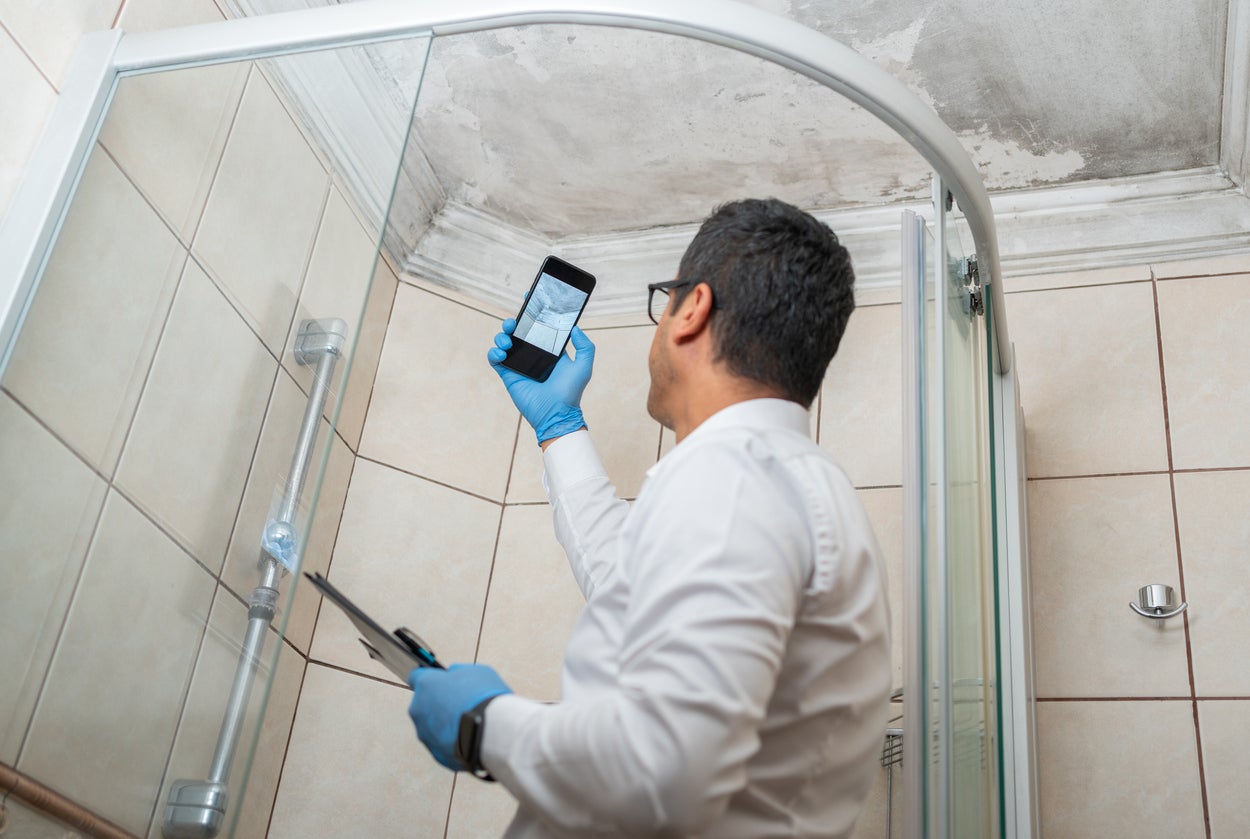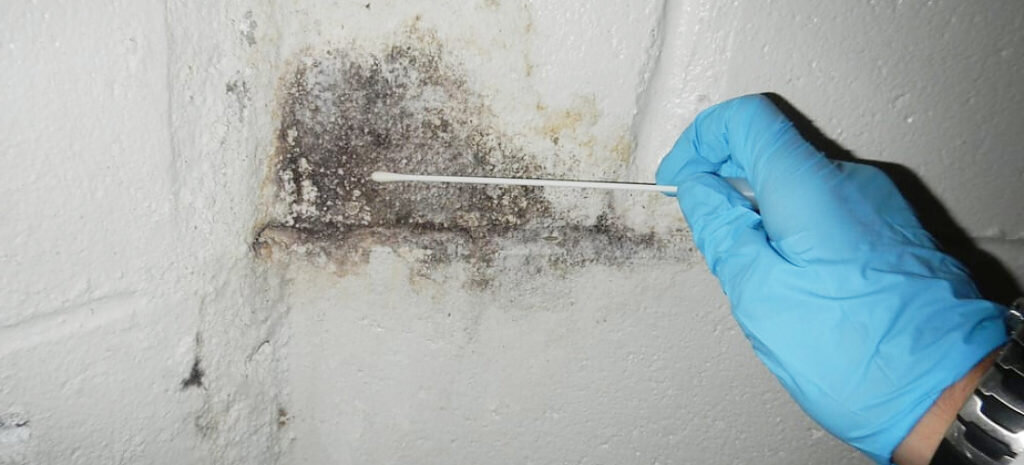Essential Actions After Mold Remediation
Essential Actions After Mold Remediation
Blog Article
Expert Tips for Post Mold And Mildew Removal Success
In the world of mold and mildew remediation, successfully eradicating mold and mildew is just half the fight; the real challenge exists in preventing its reappearance. By adhering to professional tips and ideal methods, people can safeguard their spaces against mold and mildew renewal and keep a healthy interior atmosphere.
Screen Moisture Levels Routinely
Regular tracking of moisture degrees is necessary in making sure the performance of blog post mold removal initiatives. After finishing mold remediation procedures, preserving ideal humidity degrees is vital to avoid mold and mildew re-growth and guarantee a healthy and balanced interior atmosphere. Tracking humidity levels enables very early detection of any spikes or variations that could possibly lead to mold revival. High humidity levels over 60% produce a helpful atmosphere for mold to prosper, making normal keeping an eye on a positive measure to avoid any type of future mold issues - After mold remediation.
Using hygrometers or moisture meters can help in accurately measuring humidity degrees in various areas of the property. These tools give real-time data that enables remediation professionals to make informed decisions concerning ventilation, dehumidification, and other necessary activities to preserve excellent humidity degrees post-remediation. Furthermore, developing a regular schedule for moisture checks, specifically in risky locations such as kitchens, cellars, and washrooms, is a proactive strategy to mold prevention. By constantly keeping track of humidity levels, homeowner can efficiently minimize the risk of mold reoccurrence and preserve a healthy indoor atmosphere post-remediation.
Conduct Thorough Inspections Post-Remediation
Complying with the conclusion of mold and mildew remediation treatments, it is important to conduct detailed evaluations to verify the effectiveness of the remediation procedure. These post-remediation examinations are vital in guaranteeing that the mold issue has actually been effectively attended to which there is no reappearance or staying mold and mildew development. Examinations should be executed by qualified experts that have expertise in recognizing mold and examining interior air high quality.
Throughout these evaluations, numerous techniques such as visual evaluations, air sampling, and surface tasting may be utilized to completely examine the remediated locations. Visual assessments involve a thorough evaluation of the properties to look for any visible indications of mold development or water damage. Air sampling helps in figuring out the airborne mold spore levels, while surface area sampling can identify mold and mildew fragments on surface areas.
Implement Appropriate Air Flow Methods
After making sure the effectiveness of the mold and mildew removal procedure with complete examinations, the next vital step is to concentrate on implementing correct air flow strategies. Adequate air flow is necessary in preventing mold and mildew reoccurrence by regulating moisture levels and promoting air flow. To attain this, it is recommended to make use of exhaust followers in areas vulnerable to high humidity, such as bathrooms and kitchen areas. Furthermore, opening doors and windows when weather permits can aid boost airflow and minimize dampness build-up. website link Air purifiers and dehumidifiers are this post also valuable devices in keeping optimum interior air high quality.
Appropriate air flow not just aids in avoiding mold and mildew growth but also contributes to the overall health and wellness and convenience of occupants. By guaranteeing sufficient air flow throughout the home, you can reduce the threat of mold regrowth and produce a healthier living setting.

Use Mold-Resistant Materials for Services
To improve the lasting effectiveness of mold and mildew remediation efforts, integrating mold-resistant materials for repair work is essential in mitigating the risk of future mold development. Mold-resistant materials are created to endure dampness and prevent mold and mildew growth, making them a vital choice for areas vulnerable to wetness and moisture. When fixing locations influenced by mold and mildew, making use of materials such as mold-resistant drywall, mold-resistant paints, and mold-resistant caulking can aid stop mold and mildew reappearance.
Mold-resistant drywall is an exceptional alternative to traditional drywall in locations like cellars and shower rooms where moisture degrees are higher. When exposed to damp conditions, this kind of drywall has a special finishing that withstands mold growth even. Additionally, making use of mold-resistant paints containing antimicrobial agents can better hinder mold advancement on wall surfaces and ceilings.
In areas where wetness is typical, such as bathrooms and cooking areas, using mold-resistant caulking around tubs, home windows, and sinks can aid seal out water and avoid mold from taking hold in cracks and gaps. By purchasing these mold-resistant materials during fixings post-remediation, you can considerably decrease the chance of future mold and mildew problems and maintain a healthier interior setting.
Maintain Cleanliness and Address Water Issues
Ensuring sanitation and immediately attending to water issues are fundamental practices to support in safeguarding interior rooms from mold reinfestation. After mold and mildew removal, it is essential to keep a tidy environment to avoid the regrowth of mold and mildew (what to do after mold remediation). Normal cleaning, cleaning, and vacuuming can assist get rid of any kind of lingering mold spores and prevent them from multiplying and resolving. Additionally, maintaining interior rooms dry and resolving any kind of water concerns immediately is crucial in mold and mildew prevention. Leakages, water breach, or high humidity levels can produce the excellent breeding place for mold, so it is crucial to fix any water-related issues instantly.
To preserve tidiness, think about making use of HEPA read this filters in vacuums and air purifiers to trap mold spores and prevent their circulation airborne. In addition, making certain appropriate air flow in areas susceptible to moisture buildup, such as restrooms and cooking areas, can assist keep moisture degrees in check. By staying vigilant concerning sanitation and addressing water concerns promptly, you can effectively stop mold and mildew reinfestation and preserve a healthy indoor environment.
Conclusion

In the realm of mold and mildew removal, efficiently getting rid of mold and mildew is only half the fight; the real obstacle lies in preventing its reappearance. After completing mold removal treatments, keeping optimum humidity levels is critical to stop mold and mildew re-growth and guarantee a healthy and balanced indoor environment. High moisture degrees above 60% produce a favorable setting for mold to flourish, making normal monitoring a positive procedure to stop any kind of future mold issues.
To boost the long-lasting effectiveness of mold and mildew removal efforts, including mold-resistant materials for repairs is important in mitigating the threat of future mold development. After mold removal, it is vital to preserve a clean environment to avoid the regrowth of mold and mildew.
Report this page